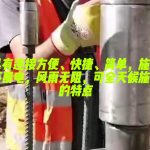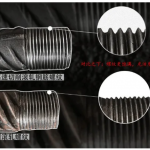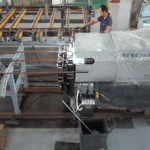一、Construction preparation:
1. Carefully get familiar with the drawings, strictly follow the construction drawings, 16g101 ~ 16g101-3, 17g101-11, 18g901-1 ~ 18g901-3 standard atlas and relevant specifications, standards and design changes, correctly calculate the material list, cut the materials correctly, and make the processing according to the specifications, standards and design requirements.
2. Before processing, a detailed processing batching list (blanking list) shall be issued and submitted to the constructor of the project department for review.
3. Carry out technical safety education for operators.
4. Draw the binding distribution diagram of construction reinforcement, and draw nodes at important parts.
5. All mechanical operations must be well maintained.
6. The project is a frame and shear wall structure, and its seismic grade is: 13# building is grade II, 12#, 15# commercial part and frame and shear wall within relevant scope are grade II, the rest are grade III, frame grade III and basement frame grade III.
7. Reinforcement: the grade and specification meet the design requirements, with factory certificate and retest report.
8. Machines and tools: straightening machine, bending machine, cutting machine, wire rolling machine, hoop bending machine, etc.
9. The incoming reinforcement must have product certificate, factory inspection report, and the raw materials of reinforcement have been submitted for inspection and passed the inspection.
Contents of reinforcement mobilization inspection: each bundle (plate) is hung with signs (indicating manufacturer, production date, steel number, furnace and tank number, reinforcement grade, diameter, etc.), and attached with quality certificate. Check whether it is consistent with the quality certificate. The reinforcement surface shall be free of cracks, scabs and folds. Bumps are allowed on the reinforcement surface, but they shall not exceed the height of the transverse rib. The bending degree of reinforcement per 1m shall not be greater than 4mm
二、Construction preparation:
1. Carefully get familiar with the drawings, strictly follow the construction drawings, 16g101 ~ 16g101-3, 17g101-11, 18g901-1 ~ 18g901-3 standard atlas and relevant specifications, standards and design changes, correctly calculate the material list, cut the materials correctly, and make the processing according to the specifications, standards and design requirements.
2. Before processing, a detailed processing batching list (blanking list) shall be issued and submitted to the constructor of the project department for review.
3. Carry out technical safety education for operators.
4. Draw the binding distribution diagram of construction reinforcement, and draw nodes at important parts.
5. All mechanical operations must be well maintained.
6. The project is a frame and shear wall structure, and its seismic grade is: 13# building is grade II, 12#, 15# commercial part and frame and shear wall within relevant scope are grade II, the rest are grade III, frame grade III and basement frame grade III.
7. Reinforcement: the grade and specification meet the design requirements, with factory certificate and retest report.
8. Machines and tools: straightening machine, bending machine, cutting machine, wire rolling machine, hoop bending machine, etc.
9. The incoming reinforcement must have product certificate, factory inspection report, and the raw materials of reinforcement have been submitted for inspection and passed the inspection.
Contents of reinforcement mobilization inspection: each bundle (plate) is hung with signs (indicating manufacturer, production date, steel number, furnace and tank number, reinforcement grade, diameter, etc.), and attached with quality certificate. Check whether it is consistent with the quality certificate. The reinforcement surface shall be free of cracks, scabs and folds. Bumps are allowed on the reinforcement surface, but they shall not exceed the height of the transverse rib. The bending degree of reinforcement per 1m shall not be greater than 4mm
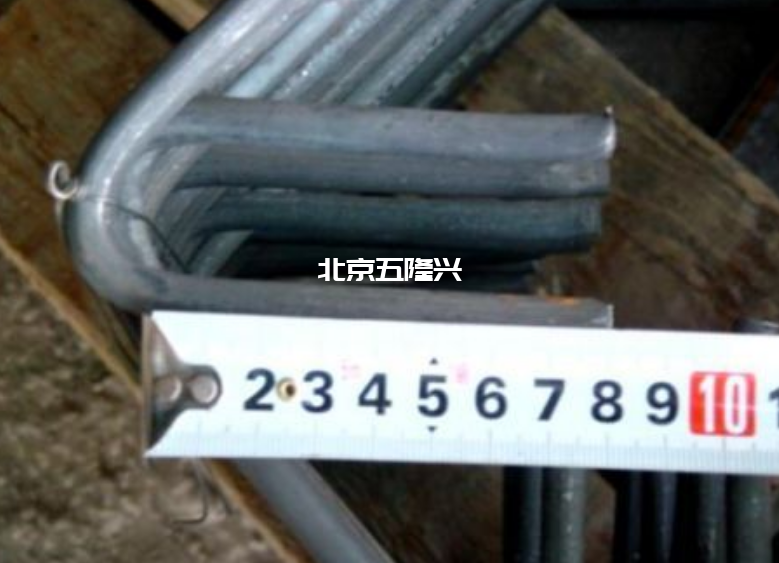
1) Stressed reinforcement
a. When hpb300 reinforcement is overlapped, 180 ° hook shall be made at the end, the inner diameter of the bending arc shall not be less than 2.5 times of the reinforcement diameter, and the length of the straight part after bending of the hook shall not be less than 10 times of the reinforcement diameter;
b. When the design requires 135 ° hook at the end of the reinforcement (Fig. 1a), the inner diameter D of the bending arc of HRB400 and HRB500 reinforcement shall not be less than 4 times the diameter of the reinforcement, and the length of the straight part after bending of the hook shall meet the design requirements;
c. When the reinforcement is bent at no more than 90 ° (Fig. 1b), the inner diameter of the bending arc at the bend shall not be less than 5 times the diameter of the reinforcement
2) Stirrup
In addition to welding closed ring stirrups, the ends of stirrups shall be hooked. The form of hook shall meet the design requirements; When there are no specific requirements in the design, the following provisions shall be met:
a. In addition to meeting point 1 (a) of this article, the inner diameter of the bending arc of the stirrup hook shall not be less than the diameter of the stressed reinforcement;
b. Bending angle of stirrup hook: for general structure, it shall not be less than 90 °; 135 ° for structures with seismic requirements
c. Length of straight part of stirrup after bending: for general structure, it should not be less than 5 times of stirrup diameter; For structures with seismic requirements, it shall not be less than 10 times the diameter of stirrup.
Reinforcement processing quality inspection
1) Master project
a. The hook and bending of stressed reinforcement shall comply with the provisions of point 1) of Article 4;
b. The inner diameter of the bending arc, bending angle and the length of the straight section of the stirrup hook shall comply with the provisions of point 2) of 4.
Inspection quantity: no less than 3 pieces of the same type of reinforcement and the same processing equipment shall be randomly selected according to each work shift.
Inspection method: steel ruler inspection.
2) General items
a. The straightening and cold drawing rate of reinforcement shall comply with the provisions of point 2) of Article 2.
b. The shape and size of reinforcement processing shall meet the design requirements, and its deviation shall meet the provisions of Table 2.
The inspection quantity and method are the same as those of the main control items.
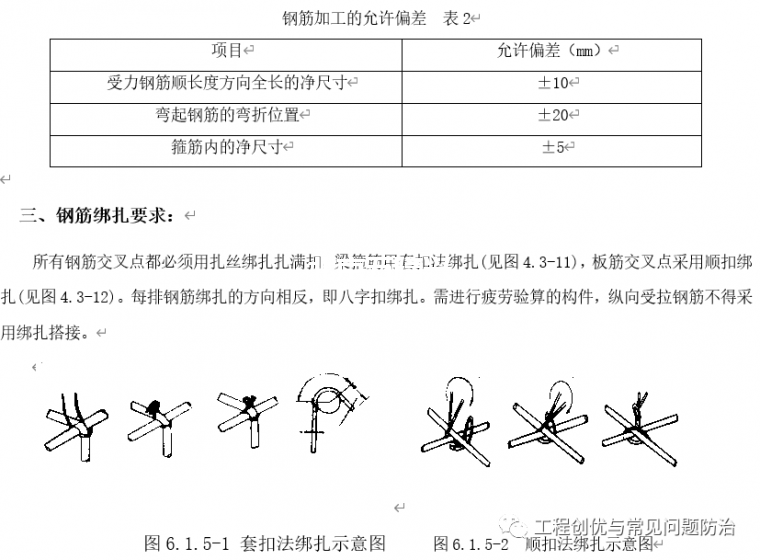
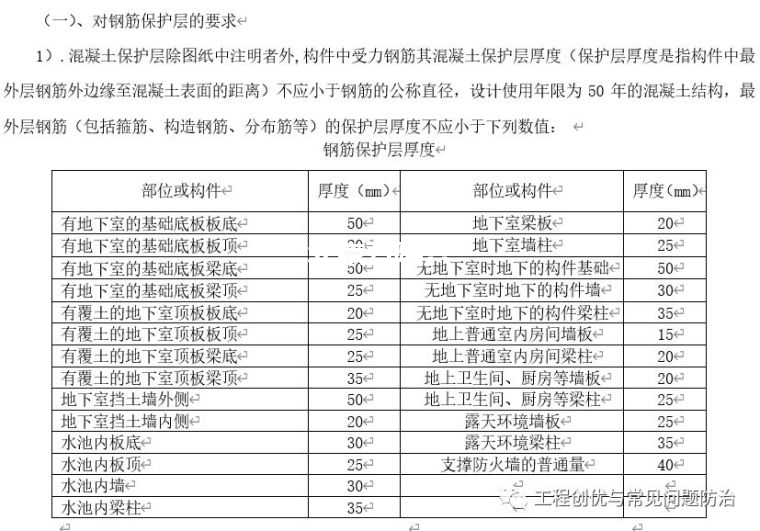
2) . plain concrete cushion blocks, supports or other reliable measures not lower than the strength grade of corresponding concrete members shall be used in each member to control the thickness of main reinforcement protective layer and the position of reinforcement skeleton.
3) When the concrete cover thickness of longitudinal stressed reinforcement in beam, column and wall is greater than 50mm, structural reinforcement mesh with diameter of 4mm and spacing of 150mm shall be added at a certain distance from the member surface in the concrete cover, and the thickness of mesh reinforcement cover shall not be less than 25mm. When the beam width is 300, the minimum thickness of the protective layer on the beam side is 25
4) When mechanical connection joints are used, the thickness of the concrete protective layer of the connectors shall meet the requirements for the minimum thickness of the protective layer of the stressed reinforcement, and the transverse clear distance between the connectors shall not be less than 25mm.
5) When the fire resistance rating of the building is class I, the thickness of beam protective layer shall not be less than 25mm in addition to the requirements in the above table.
6) The joints of stressed reinforcement should be set at the place with less stress, less joints should be set on the same reinforcement, the joints of adjacent longitudinal stressed reinforcement in the same member should be staggered, and the cantilever beam reinforcement should not be set with joints. The length of the connection area of reinforcement binding lap joint is 1.3 times the lap length. The lap rate of beam plate components located in the same connection section shall not be greater than 25%, and that of columns shall not be greater than 50%.
7) The bottom of the non connecting area on the first floor is HN / 3, the top is the greater of ≥ 500, ≥ HC, ≥ HC / 6, and the above parts are the greater of ≥ 500, ≥ HC, ≥ HC / 6 at the bottom and top of the column. Adjacent lap spacing ≥ 0.3lle.
8) The reinforcement densification interval HN / 6 and 500 at the bottom and top of the column take the larger value, and the column is usually densified into the beam and slab. See page 16g101-1, 64 / 65 for details
This article comes from the Internet and is only for communication and sharing
 五隆兴科技发展有限公司
五隆兴科技发展有限公司

